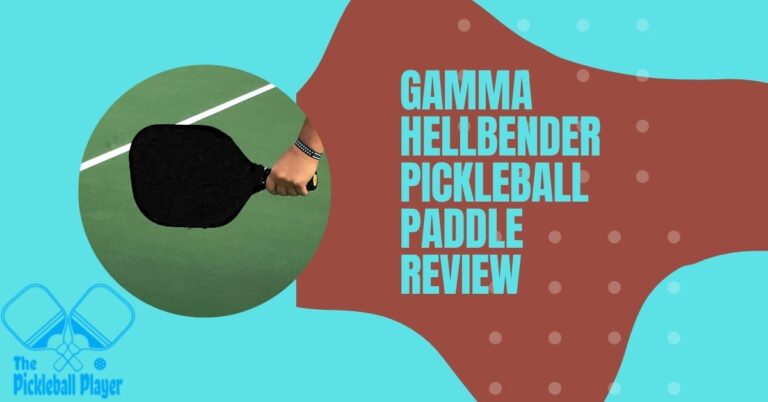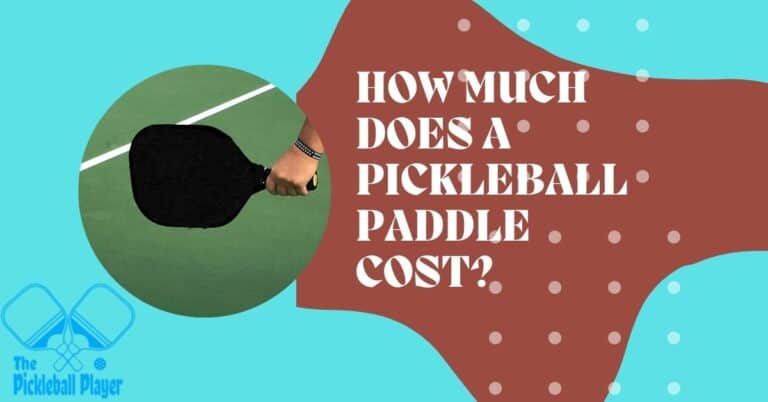What Is The Best Material For A Pickleball Paddle? Graphite vs Composite vs Wood?
Wondering what is the best material for a pickleball paddle? You’re not alone. Several people face difficulty in understanding the difference between materials used in paddles.
Since paddle material is one of the key considerations whenever purchasing a paddle, you must choose the material that matches your playing style and preferences.
Therefore, in this article, we discuss the different materials used for making pickleball paddles: graphite, fiberglass composite, and wood. Other than discussing their pros and cons, we’ll also give our recommendations, depending on the player type, budget, and skill level.
Table of Contents
- What Is The Best Material For A Pickleball Paddle?
- Why It Is Important To Choose The Best Material For A Pickleball Paddle?
- Understanding the Construction of a Pickleball Paddle
- Graphite Pickleball Paddles
- Composite Pickleball Paddles
- Wooden Pickleball Paddles
- Graphite vs Composite Pickleball Paddles
- The Bottom Line
What Is The Best Material For A Pickleball Paddle?
Graphite and composite fiberglass are both popular and best materials for pickleball paddle. There isn’t a definite winner between these two materials, as it depends on your playing style and preferences. However, you should always pick between graphite and fiberglass and avoid wooden paddles.
Below, we are going to compare all three of these so that you can select the best material for yourself or your loved ones. After reading the comparison between graphite, composite and wooden paddles, you will be able to choose the best material according to your skill sets.
Why It Is Important To Choose The Best Material For A Pickleball Paddle?
Your game, to a large extent, depends on the paddle you use. So it’s vital to play with the paddle ideal for you. But, you visit any store, you’ll see that three different materials are available. Each has its own benefits and is made for different types of players.
Picking the right type of pickleball paddle material will help you to improve the game, as you’d understand what each material offers and what it lacks. This will help you make an informed decision.
Understanding the Construction of a Pickleball Paddle
Before we discuss and compare the three materials, it’s important to understand the construction of paddles.
A pickleball paddle is usually composed of three layers. The center one is called the core, while the ones on the sides are called faces or hitting surfaces.
The hitting surface is made of graphite or composite material, while the core is typically made of Nomex, aluminum, or polymer.
In the case of wooden paddles, there are no separate materials for the core and face.
In this article, we discuss the materials of the hitting surface or the face, especially, graphite vs composite pickleball paddles. For learning more about the core of the paddle, you can check out this article.
Graphite Pickleball Paddles
Graphite is the most pricey and the lightest material used in a paddle. The lightweight paddles made of graphite provide a good touch and feel, so they are popular among players who prefer control.
So if you’re a player who likes to play a soft game and often dinks, graphite paddles are for you. Another advantage of graphite paddles is that they are generally more durable.
On the downside, graphite paddles lack power, mainly due to their lightweight. So when you’re playing on baseline serving, you might not get the best response from graphite paddles.
Composite Pickleball Paddles
Composite pickleball paddles are made up of different materials, hence the name composite. These paddles are cheaper than graphite ones. Though composite paddles typically weigh more than graphite ones, you can find composite paddles in almost any weight range.
Composite paddles have lately gained popularity, mainly due to their low prices (compared to graphite ones) and their textured surface. The textured surface of fiberglass paddles provides more spin on the ball, so a lot of players, including some pros, prefer fiberglass paddles for this reason.
Moreover, a lot of players feel that composite paddles provide more power than graphite ones. Therefore, they are a good choice for power players and for hitting serves and passing shots.
If you’re looking for composite paddles, check out our list of the best composite pickleball paddles.
Wooden Pickleball Paddles
The first pickleball paddles were made of wood; however, with the availability of better materials, wooden paddles have become the least preferred option. They don’t provide the control or spin that graphite or composite paddles do. Several people keep wooden paddles for guests or for introducing someone to this game. But in any other case, they are simply just… useless.
However, wooden paddles are quite cheap and relatively more durable. Hence, if you’re purchasing paddles for kids, community centers, or schools, you can consider them.
Moreover, a lot of beginners use a wooden paddle to familiarize themselves with the sport and know about their preferences before opting for an expensive graphite or fiberglass paddle. Both the core and face of these paddles are wooden.
Graphite vs Composite Pickleball Paddles
Since wooden paddles are now out of the equation, let’s discuss graphite vs composite pickleball paddles in detail.
Power vs Control
When comparing graphite vs composite paddles, consider whether you’re a power or control player. Graphite paddle provides better control and touch, while composite paddle lets you add power to your shots.
Spin
When it comes to spin, composite pickleball paddles have an edge. Fiberglass composite paddles come with a textured surface, so they give an extra spin. In fact, fiberglass paddles are getting popular due to their spin and affordability.
Weight
Graphite is the clear winner here. Compared to both composite and wooden paddles, graphite paddles are lighter. Though you can still get graphite-made midweight and heavy paddles, these can be lighter compared to similar fiberglass ones.
Cost
When choosing between graphite vs fiberglass pickleball paddles, price is a key factor. Generally speaking, the prices of fiberglass composite start from around $50. On the other hand, graphite paddles, of similar quality and features, cost around $65.
On the higher side though, most graphite and composite paddles can cost around $200.
Durability
Graphite paddles are usually more durable than composite ones. However, the overall durability depends on the other factors too, like the core, handle, and edge guard. Moreover, how you keep your paddle determines how long it will last.
You can read our pickleball paddle cleaning and maintenance guide to increase the lifespan of your paddles.
To sum up the main difference between graphite vs composite pickleball paddles, they differ in weight and texture. Graphite pickleball paddles are lightweight. On the other hand, Composite pickleball paddles are heavier but have a textured surface that helps in spinning.
Graphite Pickleball Paddles
Pros
- Lightweight
- Offers exceptional control for dinking and soft play
- Usually more durable
Cons
- Expensive
- Doesn’t offer as much power as composite paddles
Composite Pickleball Paddles
Pros
- Relatively cheaper
- Textured surface helps in spins
- Easier to play power shots
Cons
- Difficult to control the ball
- Heavier
The Bottom Line
Choosing the material of your pickleball paddle can be tricky, especially if you’re buying it for the first time. However, this comparison of graphite vs composite pickleball paddles would help you find the best material for pickleball paddles.
Though we’ve discussed wooden paddles too, they are not a good choice in most cases. So it’s better to stick to graphite and fiberglass ones.
Still confused? Check out our list of the best pickleball paddles.

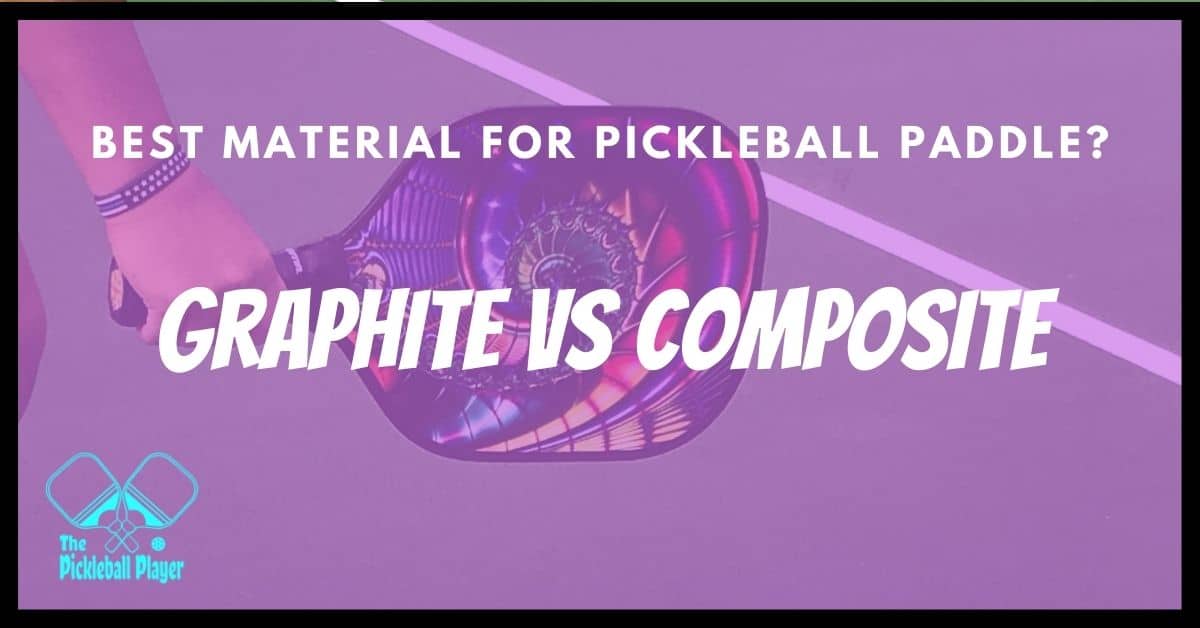
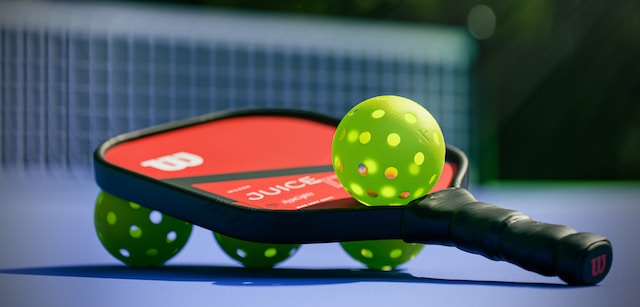
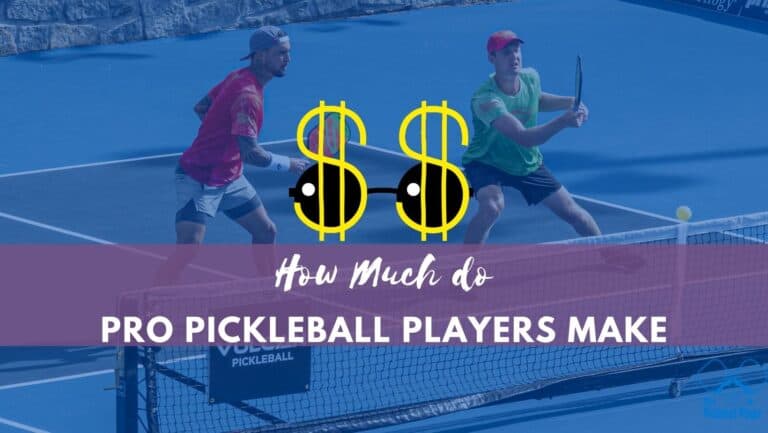
![Do Pickleball Paddles Matter? [Yes, Here’s Why]](https://thepickleballplayer.com/wp-content/uploads/2023/03/Do-PICKLEBALL-PADDLES-matter--768x402.jpg)
